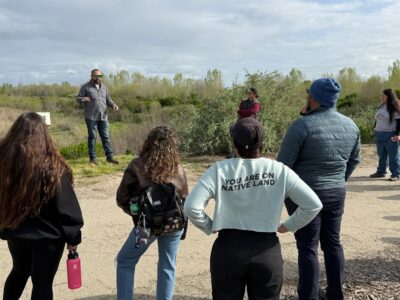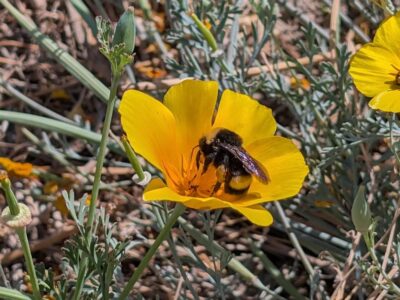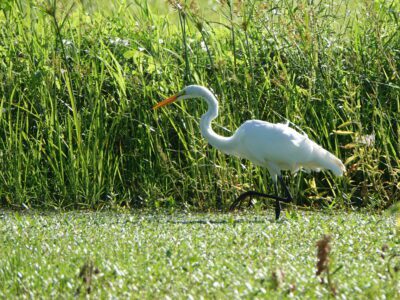As River Partners staff continue to capture photos of wildlife sightings around the state, we want to show you what we’re seeing. From smartphones to camera traps, solitary wildlife or communal, at key sites we’ve restored statewide, the wildlife continues to tell us that revitalizing river landscapes is working.
Check out our first post in the “Eyes in the Wild” series from last month.
Dos Rios State Park (Stanislaus County)
As our flagship multi-benefit floodplain restoration project, the largest public-private one of its kind in state history, River Partners restored Dos Rios over more than a decade before the 1,600-acre preserve in Stanislaus County was named California’s newest state park last year. Located at the confluence of the Tuolumne and San Joaquin rivers, it provides new homes for a variety of struggling wildlife like Central Valley Chinook salmon and steelhead trout, the critically endangered riparian brush rabbit, and the iconic Western monarch butterfly. More common species like the North American river otter also benefit from the restored riverway.
Associate Restoration Scientist Diego Garcia shot this video when he saw these playful, charismatic, and semi-aquatic creatures had noticed him. Once prolific in California waterways, settlers nearly decimated their populations with the fur trade. Since being granted protected status in California in 1961, their numbers have gradually increased, as has their habitat range. These adaptable mammals can thrive in many different freshwater habitats (like rivers, streams, lakes, and marshes) and are opportunistic predators. Their main food source is fish, but they’ll also feast on crayfish, frogs, turtles, and even birds and small mammals.
Removing rubble (like concrete that had been placed or dumped by landowners) from the waterways for improved water quality, planting native vegetation on former farmland, and eliminating agricultural runoff have all helped contribute to the return of the river otter, widely considered a conservation success story.
Imperial Wildlife Area, Finney-Ramer Unit (Imperial County)
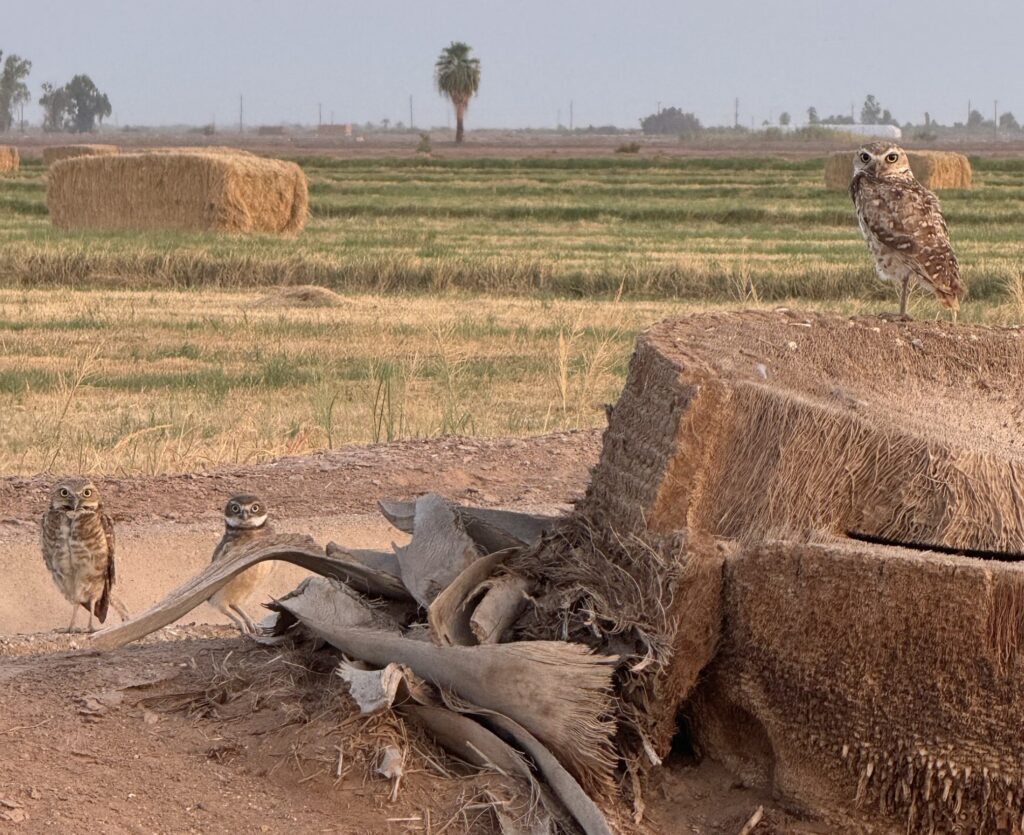
Associate Restoration Scientist Samantha Licona snapped this photo of a group of burrowing owls, called a parliament, when she was visiting the 1,500-acre Finney-Ramer restoration site, southeast of the Salton Sea. In fact, Imperial County is home to 70% of California’s burrowing owl population. With its expressive eyes and intense stares, this adorable bird makes its nest underground. Living in hot, dry regions where summer temperatures can soar above 110 degrees, their underground nests are climate-controlled to about 85 degrees.
But these birds are struggling to find homes. The main threat to burrowing owls is natural habitat loss due to human activity, like land development. When natural burrows aren’t available, burrowing owls adapt by nesting in piles of PVC pipes and other human-made materials. In fact, conservationists often create artificial burrows to support their nesting needs.
This expert predator helps to keep the rodent population under control and its mere presence is key in maintaining balance in the food chain, so River Partners takes special consideration when we restore areas inhabited by the owls during restoration. When they’re present, we avoid all earthwork and minimize ground-disturbing activities, which allow the natural crevices and animal burrows to remain intact. This ensures the burrowing owls have a place to call home or seek shelter in.
The diverse palette of native trees and vegetation we use on our projects provide abundant food year-round, which, in Imperial County, is vital since water scarcity and fallowed agricultural fields can limit available foraging habitat.
Indian Fishery side channel project (Butte County)
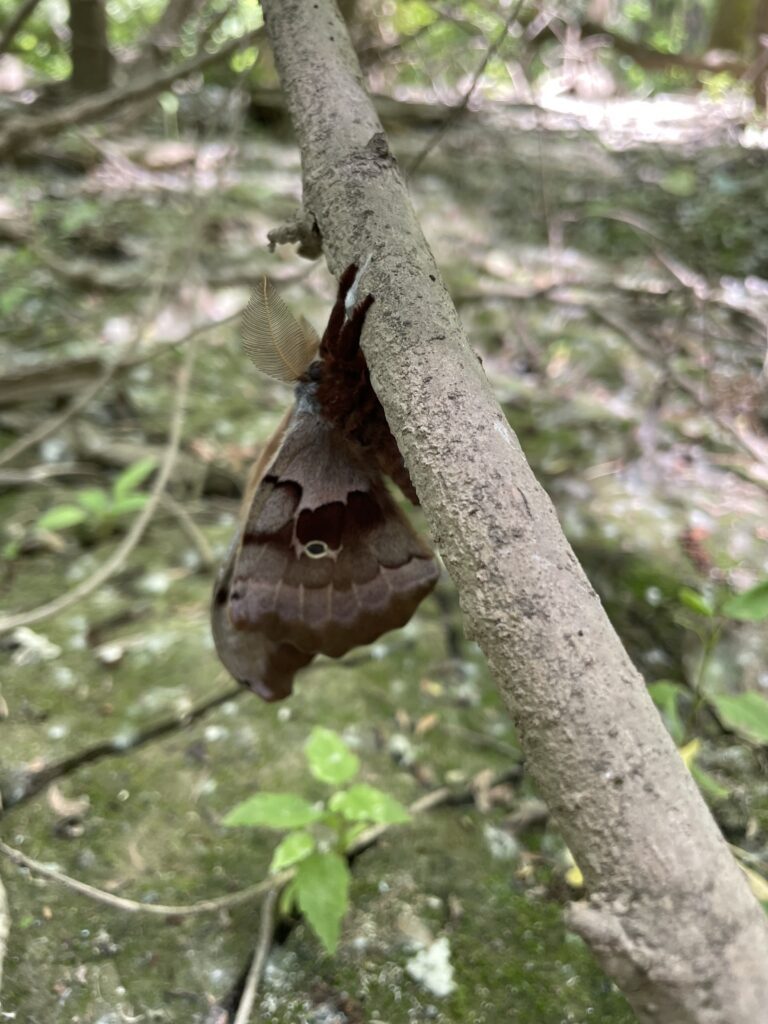
While visiting our 20-acre Indian Fishery side channel project along the Sacramento River, Associate Restoration Scientist Raquel Elander spotted this impressive Polyphemus moth attached to a branch, and Restoration Science Ecologist April Damanti captured the photo. Named after the one-eyed giant in Greek mythology, this moth features large, striking eyespots on its hindwings, certainly an effective defense against predators. And with a wingspan that can reach up to six inches, it’s one of the largest moths in North America.
This male Polyphemus moth also features large, feathery antennae which are particularly attuned to pheromones released by females. And this fellow won’t have a lot of time to find a mate—adult Polyphemus moths live for about a week after emerging from the cocoon. And with no digestive tract or mouth parts, it doesn’t eat or drink. Its only function is to mate. While not considered rare, Polyphemus moths are an uncommon sight due to their nocturnal habits and short adult lifespan.
Panorama Vista Preserve (Kern County)
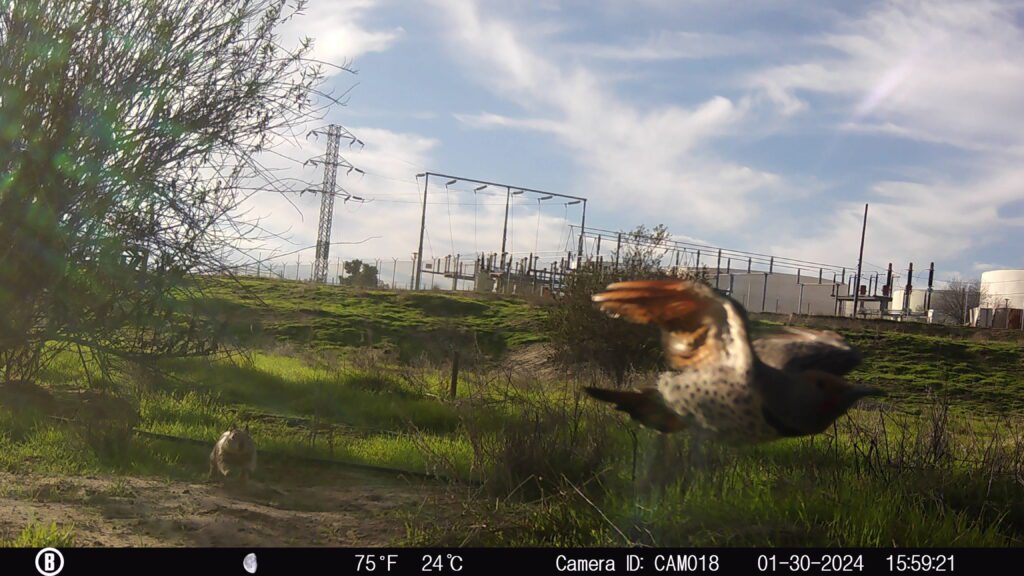
Drama in the wild! Licona also shared this photo that was captured by a camera trap at the 935-acre Panorama Vista Preserve, which sits on both sides of the Kern River in Bakersfield, as a ground squirrel chases off a northern flicker, a species of woodpecker. These two animals often share the same space, so interactions like this can be quite common in the wild. But we don’t always see it happen, so it’s helpful to turn to technology (like monitoring equipment) for an assist.
Unique among other woodpecker species, the northern flicker often feeds on the ground, using their long, sticky tongue to lap up ants and larvae. When they’re not on the ground, they nest in tree cavities, either excavating their own or taking over abandoned ones. The California ground squirrel is sociable and communal and not especially known for being territorial. However, they could get a bit defensive when protecting their burrow entrance and can be more aggressive during mating season, which starts as early as January. Judging from the fact that this photo was taken at the end of January, that could certainly be the case here. And once the chase was on, the squirrel was no match for the Northern Flicker, which simply took flight.
San Joaquin River National Wildlife Refuge (San Joaquin and Stanislaus Counties)
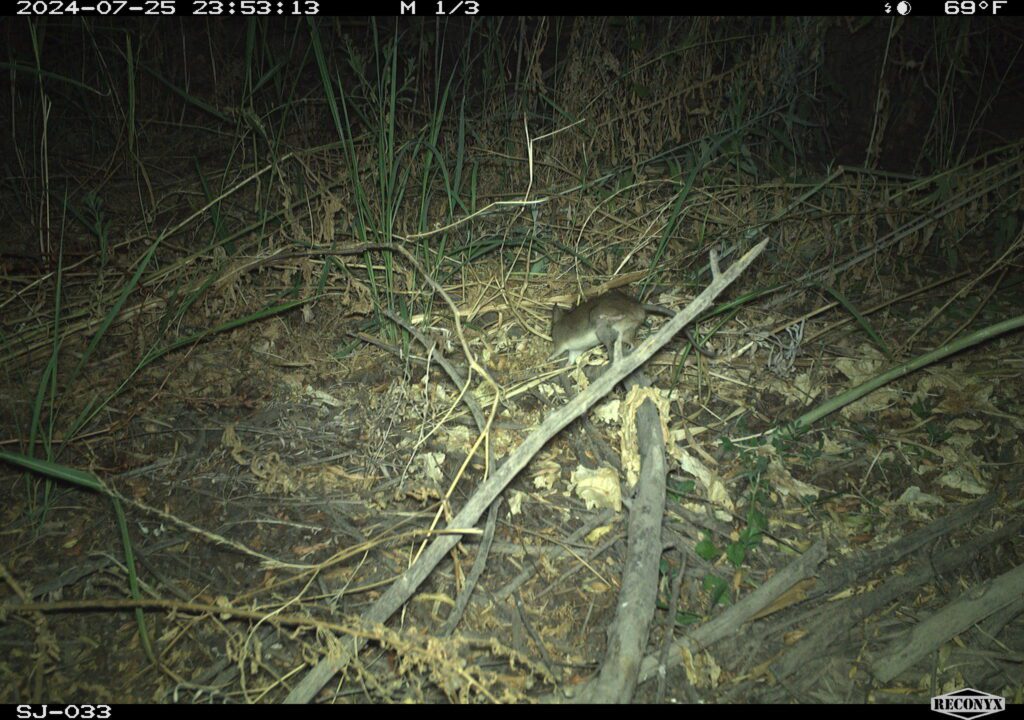
Adorable, nocturnal, and imperiled, this riparian woodrat was captured on a camera trap traipsing through some branches and debris within the San Joaquin River National Wildlife Refuge. With only two known populations—both within the San Joaquin Valley—the riparian woodrat has been listed as federally endangered by the U.S. Endangered Species Act since 2000. Habitat loss and fragmentation have contributed to its steep decline in numbers, as have flooding, wildfire, and disease. So we celebrate each sighting of this critically endangered critter.
Last year, Restoration Ecologist Haley Mirts was at an 18-year-old restored forest known as the Viera Tract inside the Refuge surveying for endangered riparian brush rabbits when she and project partners found a pair of riparian woodrats (one female and one male) in separate live traps. “It’s the first time the species has been seen since 2017, and the first ones ever seen or trapped in a restored forest,” Mirts said.
River Partners was featured in an article by The Modesto Bee last month for our continued work in restoring suitable habitat for the riparian woodrat. And when designing habitat projects, we take the unique needs of nocturnal wildlife very seriously.


